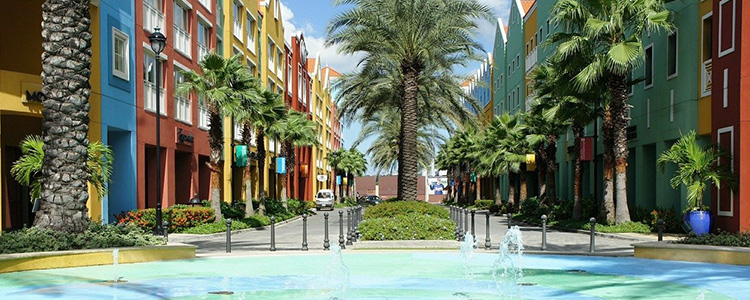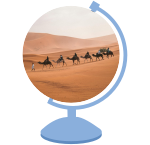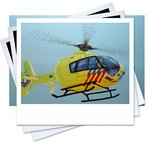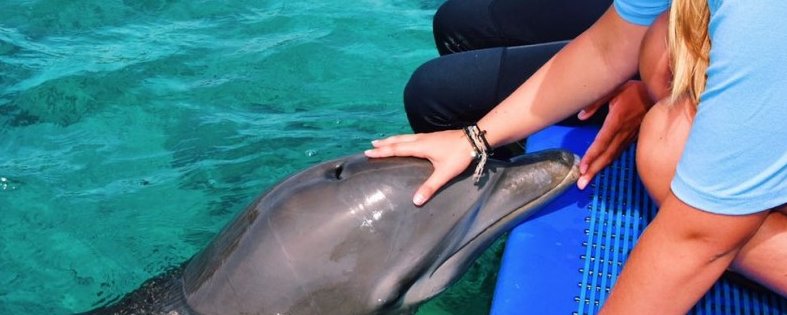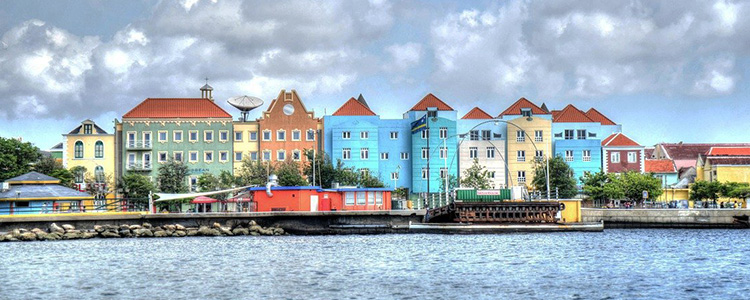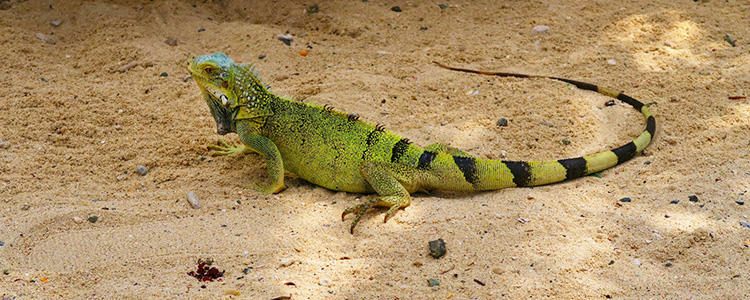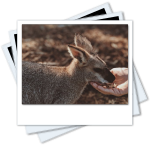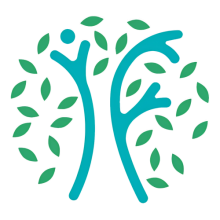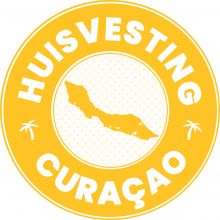Reizen door, wonen op of emigreren naar Curaçao
Naar Curaçao
- Reizen en backpacken: wat zijn de hoogtepunten en hotspots in Curaçao?
- Tijden: wat is de beste reistijd voor Curaçao, en wat is de slechtste reisperiode?
- Transport: hoe werkt het vervoer in en naar Curaçao?
- Tradities: wat zijn de gewoontes, gebruiken en beste gerechten in Curaçao?
- Portemonnee: wat zijn de dagelijkse kosten in Curaçao?
- Paklijst: wat neem je mee naar Curaçao en waar moet je nog meer aan denken?
- Problemen: hoe veilig is Curaçao, en waar ben je voor verzekerd?
- Werken en leren: waarom studeren, stagelopen, vrijwilligerswerk doen of betaald werken in Curaçao?
- Wonen en emigreren: waarom wonen als expat, emigrant of digital nomad in Curaçao?
Reizen en backpacken: wat zijn de hoogtepunten en hotspots in Curaçao?
- Curaçao is relaxed, zonnig en rustig, totdat het nachtleven begint. Dit betekent dat jong en oud soms niet voor zes uur in de ochtend terug zijn. Een aanrader voor zonaanbidders, zwemmers, snorkelaars, duikers (met of zonder dolfijnen) en andere levensgenieters. Zowel voor een kort verblijf als voor meerdere jaren! Ook voor wie de handen uit de mouwen wil steken of wat minder op uitgaande leven is gericht blijft Curaçao een prima bestemming.
Wat zijn de JoHighlights op Curaçao?
- Snorkelen en duiken - Curaçao heeft prachtige koraalriffen en een divers onderwaterleven. Het behoort niet voor niets tot de favoriete duikbestemmingen van het Caribisch gebied. Ook kun je hier duiken en zwemmen tussen de wilde dolfijnen.
- Nachtleven - Curaçao heeft een uitstekend nachtleven. In de avond begint het eiland pas echt te leven! Er zijn geregeld feestjes op het strand of bij een beach club (en daar zijn er genoeg van op het eiland te vinden).
- Carnaval - Begin februari is het grootste evenement waar de Curaçaoënaars lang naar uitkijken. De straten zijn dan gevuld met bonte kleuren en exotische muziek.
Wat zijn de JoHotspots op Curaçao?
- Willemstad- Struin op de drijvende markt, eet typisch Antilliaans bij Marshe Bieu en bewonder de kleurige huisjes langs de Handelskade. De binnenstad van Willemstad heeft niet alleen een rijke geschiedenis, er is verder ook genoeg te doen. Naast de vele musea, winkeltjes en restaurants heeft Willemstad ook een uitgebreid aanbod aan uitgaansgelegenheden.
- Mambo beach - Dit is waarschijnlijk wel het meest populaire strand en daardoor ook druk. Hierdoor is dit strand uitgebreid uitgerust met cocktailbars, live muziek en een open lucht strandbioscoop.
- Kura Hulanda - Zeer indrukwekkend museum over de de geschiedenis van de slavernij.
- Kokomo Beach - Mooi en koel strand (vroegere Vaersenbaai) waar geen entreegeld wordt vereist (maar ook geen eigen eten/drinken meegenomen mag worden) en ook een restaurant/beach bar aanwezig is met uitstekend eten.
- Klein Curaçao - Op 25 km ten zuidoosten van Curaçao ligt het kleine zusje van Curaçao, genaamd Klein Curaçao. Op dit kleine eiland kun je de rust opzoeken en verder genieten van de mooiste witte zandstranden en schitterende koraalriffen bewonderen.
- Christoffelpark - Ontdek het Christoffel en Mount Christoffel per auto, quad, mountainbike, paard of te voet.
Wat zijn de JoHorribles op Curaçao?
- Ondanks de niet al te vochtige warmte zijn er toch redelijk wat muggen.
- Ondanks het dorpse karakter van het eiland heerst in sommige buurten een bijna zuid- of midden-amerikaanse sfeer qua veiligheidssituatie.
- Ondanks de beperkte oppervlakte van het eiland, zijn sommige delen toch lastig bereikbaar zonder eigen vervoer.
Tijden: wat is de beste reistijd voor Curaçao, en wat is de slechtste reisperiode?
- Curaçao heeft een tropisch klimaat met weinig regen. Het is er zonnig met een aangenaam verkoelende wind die vanuit het Noordoosten richting de evenaar waait. Kortom; het perfecte klimaat.
- De gemiddelde temperatuur is er ongeveer het hele jaar door 27,5 °C en in de nacht maar 5 °C koeler. De meeste regen valt tussen oktober en januari. Daarnaast kunnen er incidenteel zware regenbuien of tropische stormen ontstaan, maar dit gebeurt haast zelden.
Wat is de beste reistijd voor Curaçao?
- Er is niet echt een beste reistijd. Tussen februari en september valt wel gemiddeld minder regen dan in de andere maanden.
Wat is de slechtste reistijd voor Curaçao?
- Er is geen overduidelijk slechte reistijd. Tussen oktober en januari valt gemiddeld wel meer regen dan in de overige maanden.
Wanneer zijn de meeste zonuren op Curaçao?
- Curaçao heeft gemiddeld 8 á 9 zonuren per dag. Dus eigenlijk schijnt overdag altijd de zon.
Wat is de zeetemperatuur op Curaçao?
- De zeetemperatuur van gemiddeld 27 °C is ideaal en is bijna gelijk aan de luchttemperatuur.
Transport: hoe werkt het vervoer in en naar Curaçao?
Hoe werkt vliegen naar Curaçao?
- Je kunt vanaf Amsterdam met een vlucht van 9 uur naar Curaçao vliegen.
Hoe werkt auto huren en rijden op Curaçao?
- Een auto huren op Curaçao is zeker een aanrader als je op eigen houtje het eiland wilt ontdekken. De wegen zijn doorgaans geasfalteerd en redelijk goed berijdbaar. Ben je van plan avontuurlijke routes te nemen, dan is een jeep wel een aanrader. Vooral in het noorden, de San Pedro-route, kun je een wat ruigere omgeving vinden. Omdat het eiland zo klein is, is een scooter of quad huren ook een leuke vervoersoplossing.
Hoe werkt de taxi op Curaçao?
- Taxi's zijn betrouwbaar en redelijk goedkoop. De meesten rijden tegen vaste tarieven. Tanken in Curaçao is anders dan in Nederland. Je wordt geacht eerst te betalen en dan pas kan je tanken. Calculeer dus een beetje in hoeveel liter je nodig denkt te hebben en bereken dan hoeveel NAf je hier ongeveer voor kwijt bent.
Hoe werkt de bus op Curaçao?
- Het busnetwerk is klein op Curaçao en ze rijden niet volgens een strak tijdschema, maar het is wel een goedkope optie. Je hebt de grote konvooi-bussen, die rijden ongeveer één keer per uur richting de meer afgelegen plekken. Kosten voor een rit zijn ongeveer €2. Daarnaast zijn er de kleine gele busjes die niet volgens vaste routes of dienstregeling rijden. Je zegt gewoon net als bij de taxi waar je heen wilt en je wordt er voor een klein bedrag afgezet.
Tradities: wat zijn de gewoontes, gebruiken en beste gerechten in Curaçao?
- Curaçao heeft inheemse, Spaanse, Afrikaanse en Nederlandse invloeden.
- Het kernwoord is wel "dushi". Zoet: alles is zoet, het eten, de mensen en Curaçao zelf.
- Eiland tijd kan geduld van je vergen. Het kernwoord is relaxxxxxxx.
Wat kan je eten op Curaçao?
- Curaçao heeft een zeer breed keukenaanbod. Van typisch Nederlands tot Japans, Argentijns, Italiaans, Braziliaans en meer.
- Vegetarisch en vegan eten is met name in Willemstad mogelijk.
- Natuurlijk zijn er ook veel lokale eetgelegenheden te vinden.
- Typisch lokaal eten bestaat uit veel vlees en vis.
- Echt “straateten” is er maar weinig, maar je vindt wel foodtrucks en lokale markten.
- Voor echt lokaal eten is de overdekte eettent Marshe Bieu een aanrader!
- Er zijn grote supermarkten zoals Carrefour en Van den Tweel.
- Minimarkets zijn overal buiten de stad wel te vinden.
Wat zijn de specialiteiten op Curaçao?
- Lokale stoofschotels als karni stoba (rundvlees) en kabritu stoba (geitenvlees).
- Sopi di banana (soep van bakbanaan).
- Lokaal gevangen vis zoals dradu (dorade), red snapper, groupers en kreeft pastechi (pastijtje) die je kunt halen bij een straatkraampje.
- Leguaan.
- Gegrilde struisvogel.
Wat kan je drinken op Curaçao?
- Bier als Amstel Bright (lijkt op Corona) is een populair biertje op de Antillen. Polar is zeer populair bier uit Venezuela, tevens het meest goedkope merk. Tegenwoordig is er ook Curaçaose bier genaamd Brion (in Barbados gebrouwen).
- Awa lamunchi (limoenwater met suiker).
- Smoothies van ananas, mango of andere tropische vruchten.
- Vers kokoswater.
- Happy hour: Veel restaurants en beachclubs hebben overdag een happy hour waar je goedkoop kunt genieten van verschillende mocktails en cocktails zoals Piña colada, fruitpunch en Lamoenchi.
- Likeuren als Rum (San Pablo bijvoorbeeld) en Blue Curaçao.
- Bier en wijn is overal wel te krijgen.
Wat zijn de feestdagen en festivals op Curaçao om rekening mee te houden?
- Op de Antillen houden ze van feest, dus er staan heel wat feestdagen op de agenda gepland. Let er wel op dat op deze feestdagen de meeste bedrijven en overheidsinstellingen gesloten zijn.
- Carnaval is waarschijnlijk het feest dat het meest uitbundig wordt gevierd op Curaçao. Dit is een week vol parades met kleur en dans door de straten in februari.
- Typisch Curaçaose feestdagen zijn de Seú Parade (oogstviering) en de Herdenking van de slavenopstand.
- Verder wordt op Curaçao ook Nieuwjaar, Koningsdag, Sinterklaas en Kerstmis uitbundig gevierd.
- Vliegerseizoen: Er is een vliegerseizoen dat meestal rond maart/april plaatsvindt. Dit is een maand vol vliegerwedstrijden.
- Zeilregatta: Houd je van zeilen? Dan is er rond maart/april het internationaal zeilregatta, waar zeilboten tegen elkaar racen.
- Een van de grotere muziekfestivals is het International Jazz festival in september. Daarnaast kan je vrijwel overal Salsa en Merengue dansen.
Hoe werkt communiceren op Curaçao?
- Papiamento, Nederlands en Engels zijn de officieel erkende talen op Curaçao.
- Papiamento is hiervan de meest gesproken taal. Het is een eigen taal die ontwikkeld is door de slaven die vanuit West-Afrika naar de eilanden waren gebracht. Langzamerhand werd de taal door andere bevolkingsgroepen overgenomen en verrijkt met andere talen zoals Portugees, Nederlands, Spaans en Engels.
- Naast deze drie officiële talen kunnen de Curaçaoënaars zich ook goed redden in het Spaans, vanwege de vele Spaanstalige landen in de regio.
- Handige woorden in het Papiamento zijn:
- Goedemorgen/Hallo: Bon dia
- Goedemiddag: Bon tardi
- Goedenavond: Bon nochi
- Op maandag: Naast “bon dia” ook nog “bon siman” (letterlijk: goede week)
- Doei: Ayó
- Ja: Si
- Nee: No
- Alstublieft: Por fabor
- Dank u wel: Danki
- Graag gedaan: Di nada
- Sorry: Sori
Portemonnee: wat zijn de dagelijkse kosten in Curaçao?
- Het toerisme op Curaçao is vooral op luxe gericht. Er zijn veel mooie luxe hotels en resorts, alleen deze zijn erg prijzig. Er zijn wel enkele goedkope opties, maar denk eraan deze tijdig te boeken. Hostels zijn er amper op Curaçao, maar er zijn wel leuke bed & breakfasts en eenvoudige appartementen.
- Bed & breakfast: Wil je de echt Curaçaose cultuur meemaken, dan is slapen en ontbijten in een bed & breakfast een aanrader. Kosten liggen tussen de 15 en 30 euro per nacht.
- Appartement: Tussen de 15 en 30 euro per nacht kun je een eenvoudig appartement of studio huren. Wil je luxer verblijven dan wordt het al snel 30 tot 60 euro per nacht.
- De kosten voor een goedkoop verblijf zijn meestal tussen de 15 en 30 euro.
- Dineren kan rond de 8 euro.
- Een biertje of cola is tussen de 1 en 2 euro.
- Het openbaar vervoer kost 1,50 voor een rit.
Hoe werkt het betalen op Curaçao?
- De nationale valuta van Curaçao is de Antilliaanse gulden (Nafl). Deze munt is in waarde gekoppeld aan de US dollar.
- De US dollar is een algemeen geaccepteerde munt op het eiland.
Paklijst: wat neem je mee naar Curaçao en waar moet je nog meer aan denken?
- Lees meer over wat neem je mee naar Curaçao en wat laat je thuis: inpaklijst, checklist en reisverzekering.
Problemen: hoe veilig is Curaçao, en waar ben je voor verzekerd?
- Curaçao is een redelijk veilig eiland, zeker als je je goed laat inlichten over de lokale situatie.
- Een aanzienlijk aandeel van de zware criminaliteit bestaat uit afrekeningen in het criminele circuit door onderlinge mislukte drugsdeals. Als bezoeker heb je hier in principe geen last van. Verder komt er wel geregeld kleine criminaliteit voor zoals zakkenrollers. Loop niet opzichtig met kostbare spullen en berg ze veilig op. Let ook op je koffer en andere bagage en neem absoluut geen pakketjes aan. In geval van nood kun je 917 bellen. Dit is de noodlijn voor toeristen.
- Het verkeer op Curaçao is redelijk veilig. Houd er wel rekening mee dat bepaalde regels anders zijn of anders opgevolgd worden. Zo mag je op Curaçao links en rechts inhalen en heeft de doorgaande weg altijd voorrang. Pas ook op voor scooters en auto's zonder licht in de avond. Houd ook rekening met het feit dat veel mensen dronken achter het stuur stappen. Verder is het aan te raden zeer oplettend te zijn bij rotondes omdat de systematiek hierachter niet anders wordt geinterpreteerd door de lokale bevolking. Je kan bijvoorbeeld beter niet verwachten dat je voorrang krijgt als je op de rotonde rijdt.
- Loop 's avonds niet alleen op afgelegen plaatsen, zoals rustige en lege stranden en steegjes. Stadswijken als Souax, Seru Fortuna en Scharloo zijn bijvoorbeeld wijken waar je 's nachts beter niet alleen kunt lopen. Drugshandel en prostitutie komt hier voor.
- Het bezit van soft- en harddrugs wordt streng bestraft.
Hoe zit het met het natuurgeweld op Curaçao?
- Van juni tot november kunnen er orkanen voorkomen in het Caribisch gebied. Toch komen orkanen maar zelden voor op Curaçao.
Waar moet je op letten bij je vaccinaties, bezoek aan de dokter of het ziekenhuis in Curaçao?
- Lees meer over het gezondheidsstelsel van Curaçao, het ziekenhuis en gebruik maken van de lokale zorg op de pagina over zorg in Curaçao.
- Laat je goed informeren over de laatste stand van zaken betreffende de gezondheidssituatie en vaccinaties bij een betrouwbare bron.
- Check ruim voor vertrek voor welke medicijnen je wel en niet mag meenemen of dat je een verklaring nodig hebt.
- Wil je lichamelijk ongemak op reis voorkomen check dan ook de pagina over lichamelijke klachten op reis.
Welke verzekeringen heb je nodig voor een reis of verblijf in Curaçao?
- Voor reisverzekeringen waar je activiteiten in Curaçao zijn gedekt check je activiteiten in het buitenland verzekeren
- Voor verzekeringen als je gaat emigreren of werken als expat in Curaçao: check je wonen in het buitenland verzekeren
Werken en leren: waarom studeren, stagelopen, vrijwilligerswerk doen of betaald werken in Curaçao?
- omdat Curaçao een van de beste bestemmingen voor stages en betaald werk in het buitenland is.
- omdat er ook voor vrijwilligerswerk zijn er voldoende mogelijkheden.
- omdat je er gewoon Nederlands kan praten.
- omdat er een interessante mix is van Nederlandse, Caribische en Latijns-Amerikaanse invloeden.
Waar moet je op letten als je gaat werken op Curaçao?
- dat het toch anders is dan in Nederland.
- dat de werkcultuur informeel is met minder strikte deadlines dan in Nederland.
Waar kan je meer zien en lezen over activiteiten en vacatures op Curaçao?
- Lees verder over werken in Curaçao.
- Lees verder over studeren en stagelopen in Curaçao.
- Lees verder over vrijwilligerswerk doen in Curaçao.
Wonen en emigreren: waarom wonen als expat, emigrant of digital nomad in Curaçao?
- omdat Curaçao relatief hoog scoort op de lijsten met favoriete bestemmingen van emigranten, expats en working nomads.
- omdat de zon meestal schijnt.
- omdat er goed internet is.
- omdat de voorzieningen goed zijn.
- omdat er goede (internationale) scholen te vinden zijn, met vaak Nederlands of Engels als voertaal. Er zijn ook internationale scholen.
- omdat de expat gemeenschap groot en levendig is, met name in Jan Thiel en Pietermaai.
Waar moet je op letten als je gaat wonen op Curaçao?
- dat je nog steeds oplet in toeristische gebieden op je spullen.
- dat het levensonderhoud op Curaçao relatief duur is.
- dat je voor serieuze medische behandelingen naar een ander land moet.












